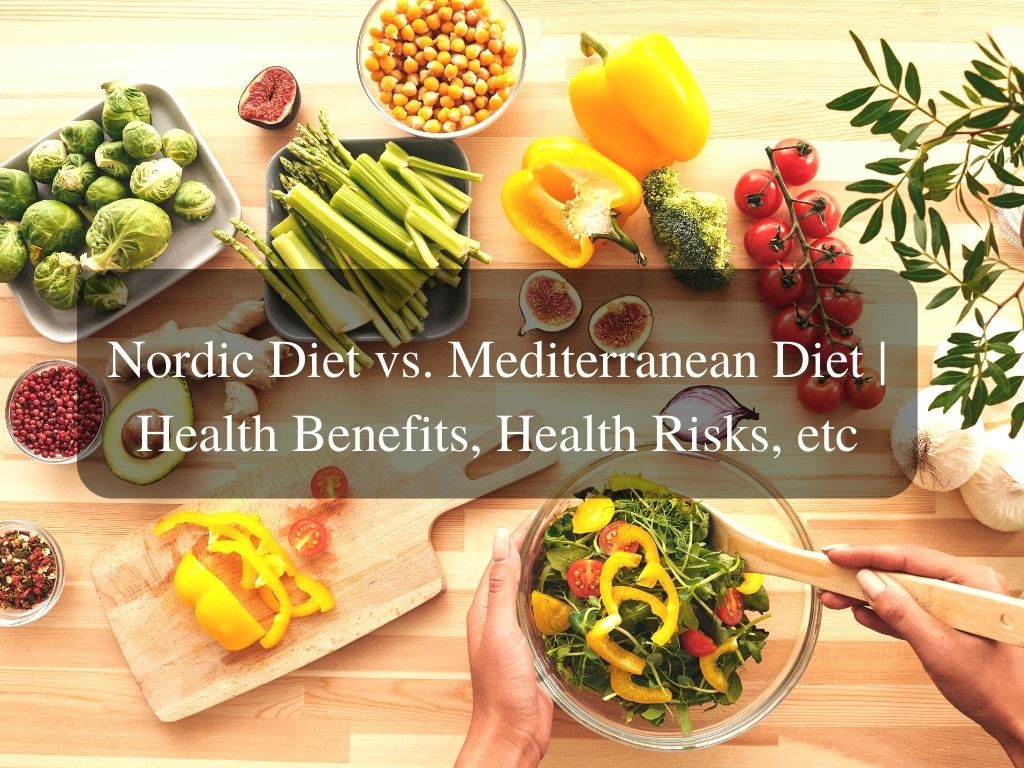
These two plant-based diets, Nordic And Mediterranean diets are very similar, but each has a distinctly regional flavor.
Every culture has its definition of what constitutes a healthy diet. Often, differences between regional cuisines are based on what is locally available. Corn, for example, is not grown in every part of the world, and chickpeas and olives, which give Middle Eastern dishes their distinct flavor, maybe less widely available in other parts of the world.
Two regionally inspired approaches to healthy eating have evolved into formal, identifiable diets. Both the Nordic and Mediterranean diet, which resembles the dietary habits of people living near the Nordic And Mediterranean diets which resembles a health-conscious, modern Scandinavian approach to food and lifestyle, are now regarded as viable options for people worldwide.
Overview of the Nordic And Mediterranean diets
- Mediterranean diet
For many years, dietitians worldwide have favored the Mediterranean diet. The Mediterranean diet, developed in the 1960s to reduce the incidence of heart disease, borrows many eating principles from southern European countries bordering the Mediterranean, including Greece, Spain, and Italy.
It also contains plenty of heart-healthy olive oil. Many Mediterranean dishes include cheeses made from sheep’s or goat’s milk, such as feta, chevre, and pecorino. Yogurt, particularly thick, creamy Greek yogurt, is also included in the diet.
The Mediterranean diet emphasizes moderation and is more of an eating pattern than a restrictive diet. As a result, no food is forbidden, but dairy, red meat, sweets, and processed foods are consumed in smaller quantities, according to Collier.
- Nordic Diet
Like the Mediterranean diet, the Nordic diet borrows eating principles from people who live in a specific region, specifically the Nordic countries of Denmark, Finland, Iceland, Norway, and Sweden.
The Nordic diet emphasizes plant-based foods while also including moderate amounts of fish, eggs, and dairy products. Because the emphasis is on using locally sourced and sustainably harvested produce, the fish featured in the Nordic diet tend to be the region’s fatty, cold-water fish – herring, mackerel, salmon, and sardines. These fish are excessive in omega-three fatty acids, which might be correct for your heart.
The Nordic diet may include fermented and pickled foods such as yogurt, kefir, pickled herring, and pickled vegetables. Fermented foods aid in the maintenance of a healthy digestive system.
The Nordic diet, which emphasizes local, in-season produce, may be better for the environment than the standard American diet, which favors processed foods and year-round availability of most fruits and vegetables. Red meat cultivation has also been linked to environmental concerns, so diets that include fewer foods may be better for the environment.
Health benefits of Nordic And Mediterranean diets
- Mediterranean Diet Health Benefits
The Mediterranean food regimen has additionally been related to a decreased threat and higher control of Type 2 diabetes. The Mediterranean food regimen is related to a reduced danger of colon cancers because it’s miles excessive in fiber and decreases intake of processed and crimson meats.
- The Nordic diet
The principles of the new Nordic diet were established in 2004 by a group of nutritional scientists based in Copenhagen, Denmark. Its origins, however, can be traced back to traditional Scandinavian eating habits. Because the diet is new, it hasn’t been studied as thoroughly as older protocols like the Mediterranean diet, but it follows similar principles. It is thought to have similar health benefits.
Health Risks of Nordic And Mediterranean diets
- Mediterranean Diet
“There aren’t any any particular fitness dangers related to the Mediterranean diet,” Collier says. However, a few interpretations permit mild quantities of purple wine, and “alcohol intake isn’t always suitable for everyone.”
- The Nordic diet
The Nordic diet has been linked to a few specific health risks. However, changing your eating habits can affect your intake of certain nutrients, so it’s best to consult a registered dietitian or another nutritional expert before making drastic changes to your diet.
Though eating more fish can raise mercury levels, which can have negative health consequences, the smaller the fish, the less mercury it has in its body. Because much of the seafood consumed in the Nordic diet is smaller in size and thus lower on the food chain, it does not contain as much mercury as larger fish such as tuna or swordfish. Sardines, anchovies, herring, and salmon are healthier seafood options. Furthermore, mercury poisoning is not a significant concern because fish is not consumed daily in the Nordic diet.
FAQs
1-Why the Mediterranean diet is the best?
The Mediterranean diet emphasizes eating less red meat, sugar, and saturated fat while eating more fruits, vegetables, nuts, and whole grains. It’s delicious and simple to follow and get started with.
2- Is the Mediterranean diet the healthiest?
The Mediterranean diet, rich in fruits, vegetables, whole grains, legumes, and olive oil, is possibly the world’s healthiest. It favors fish and poultry as lean protein sources over red meat. However, red wine is taken up regularly, in moderation.
3-How does the Nordic And Mediterranean diets comparable?
Ans. Both Nordic And Mediterranean diets emphasize fruits, vegetables, and entire grains and restrict saturated fat and crimson meat. They each encompass fish, however the styles of fish are different. The Mediterranean eating regimen consists of olive oil whilst the Nordic eating regimen makes use of canola oil.
